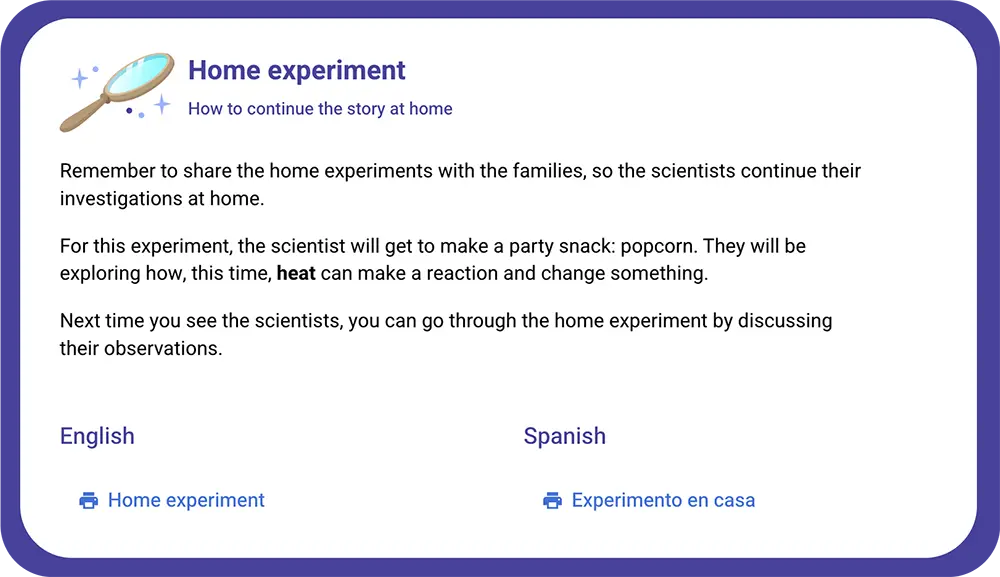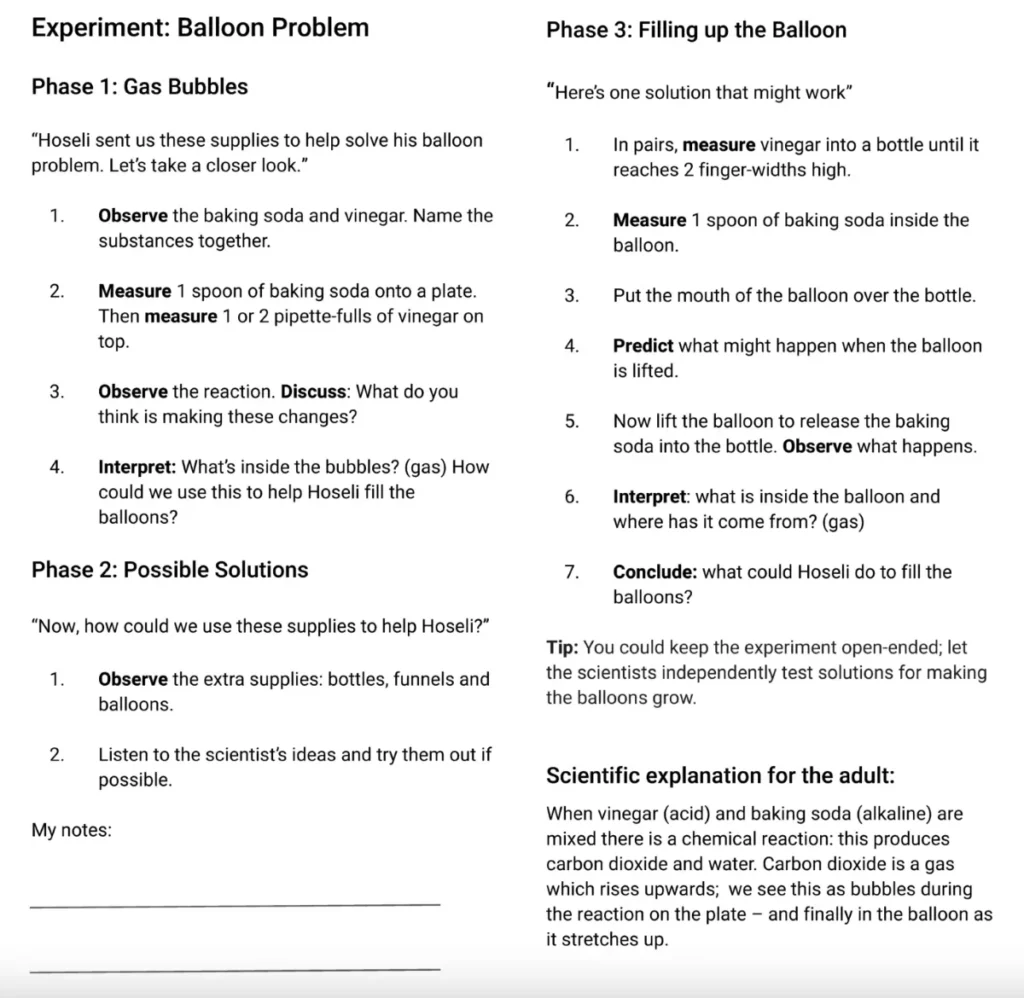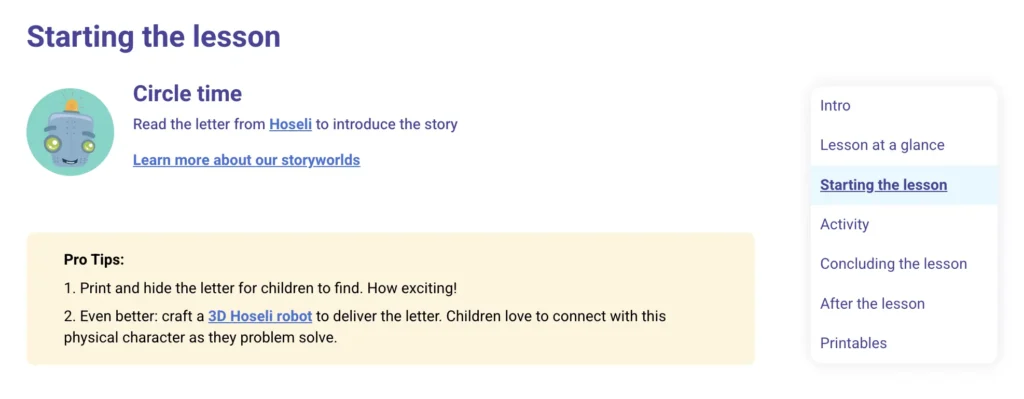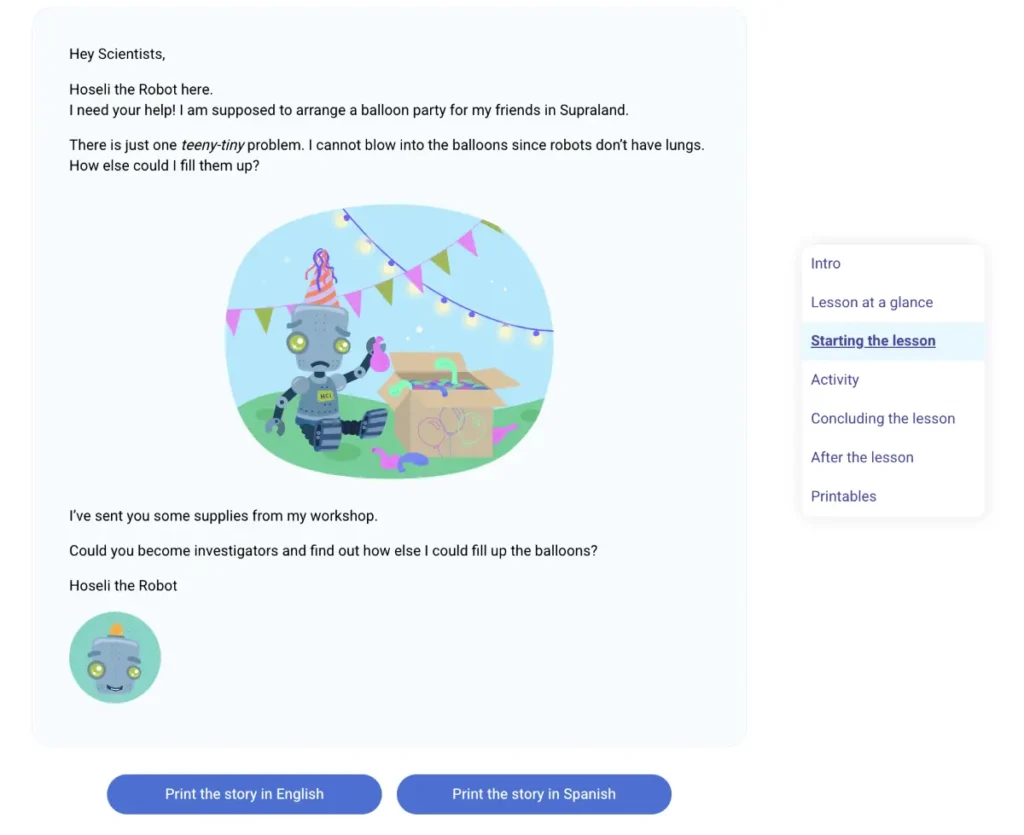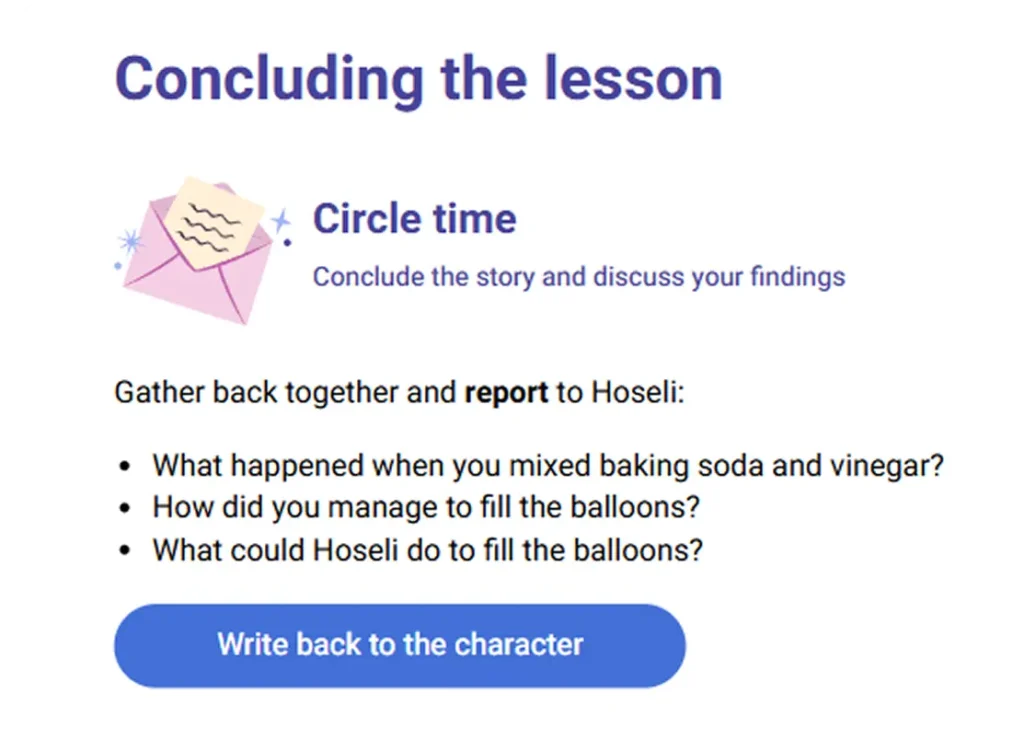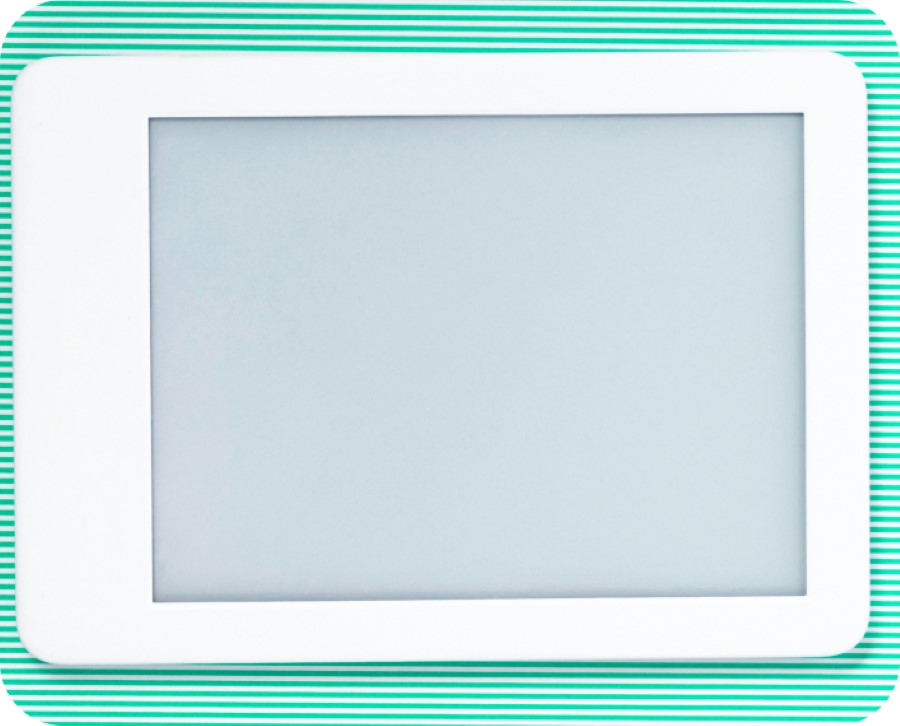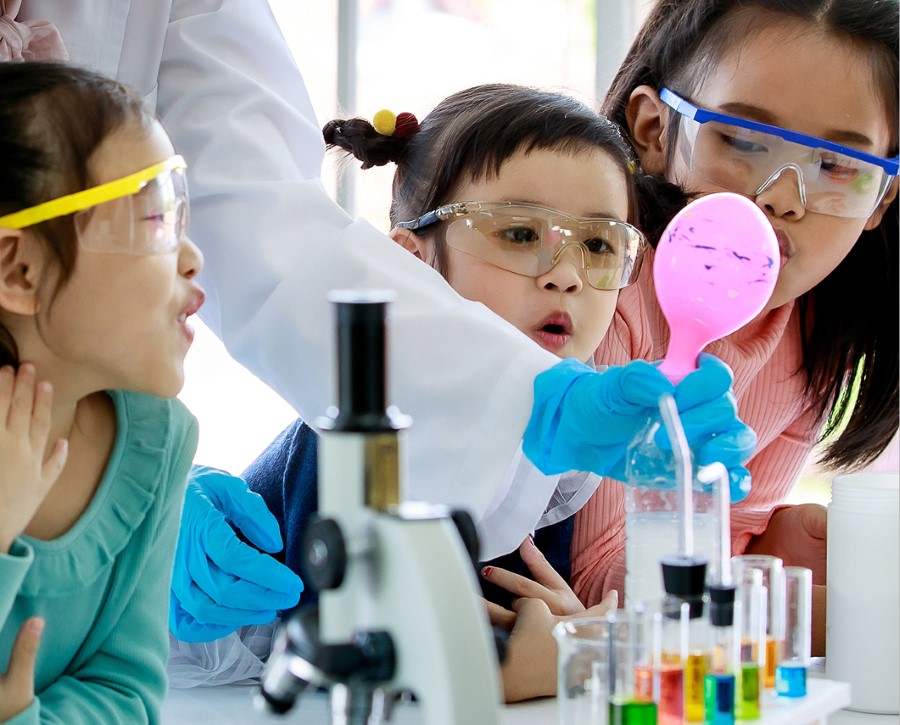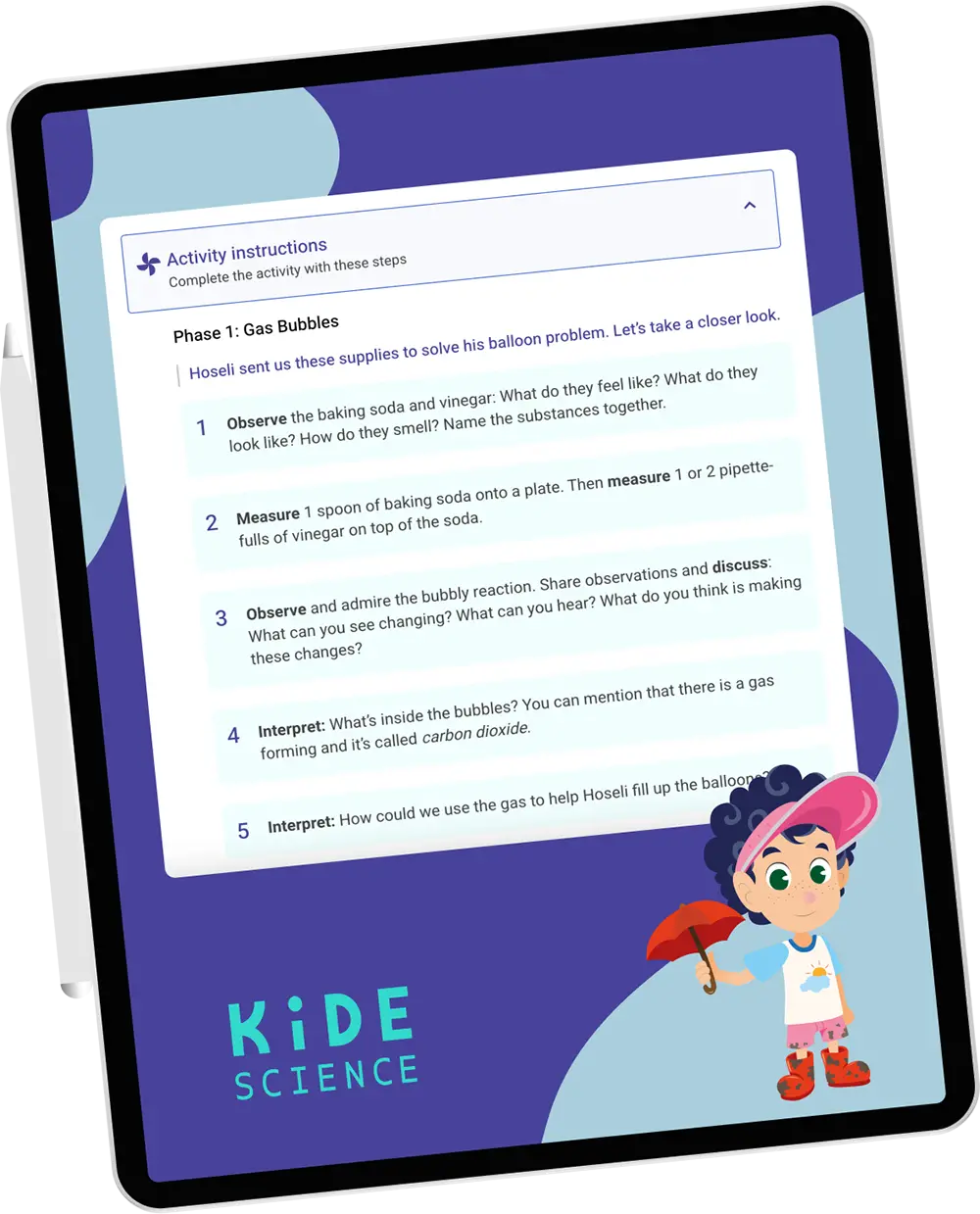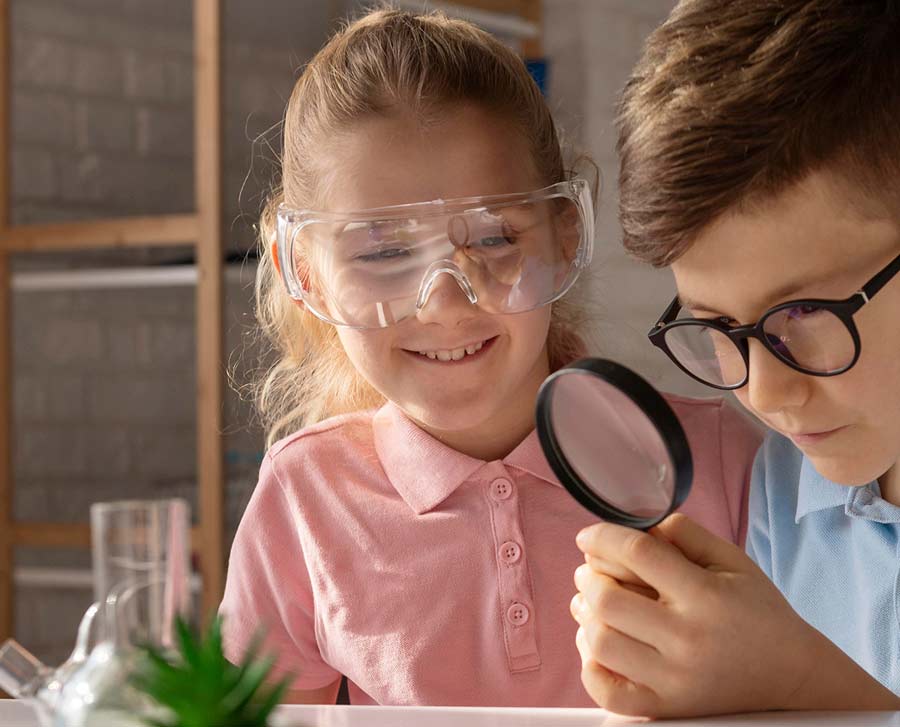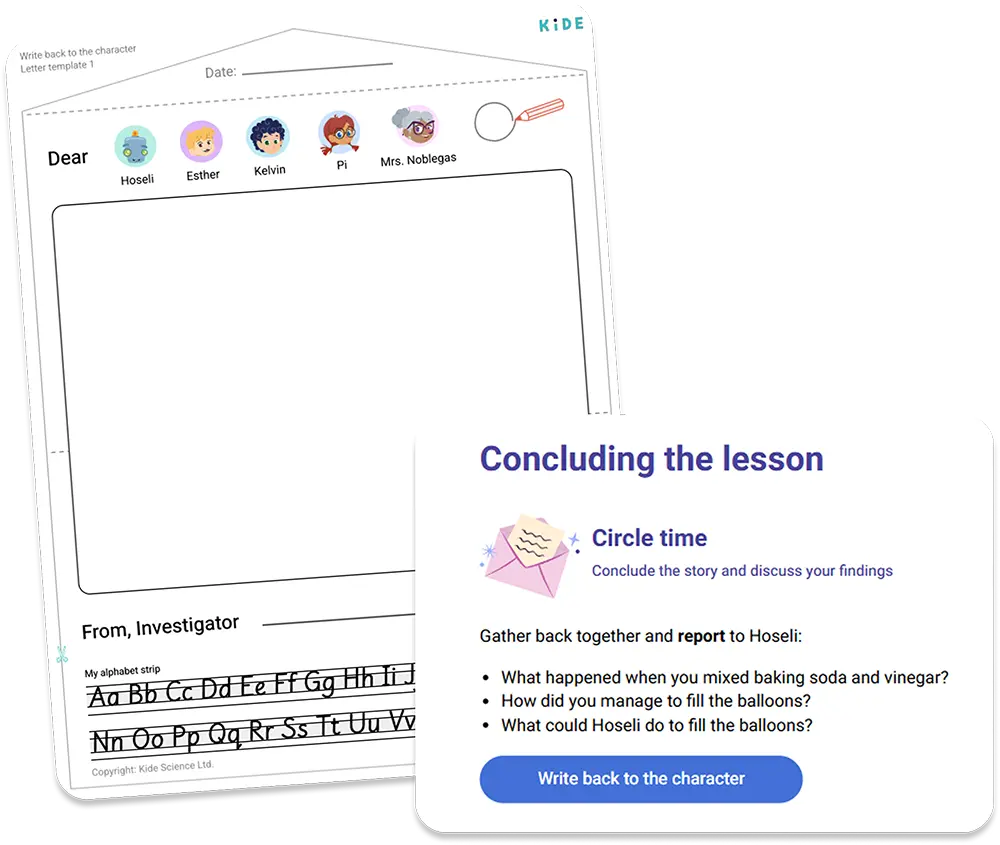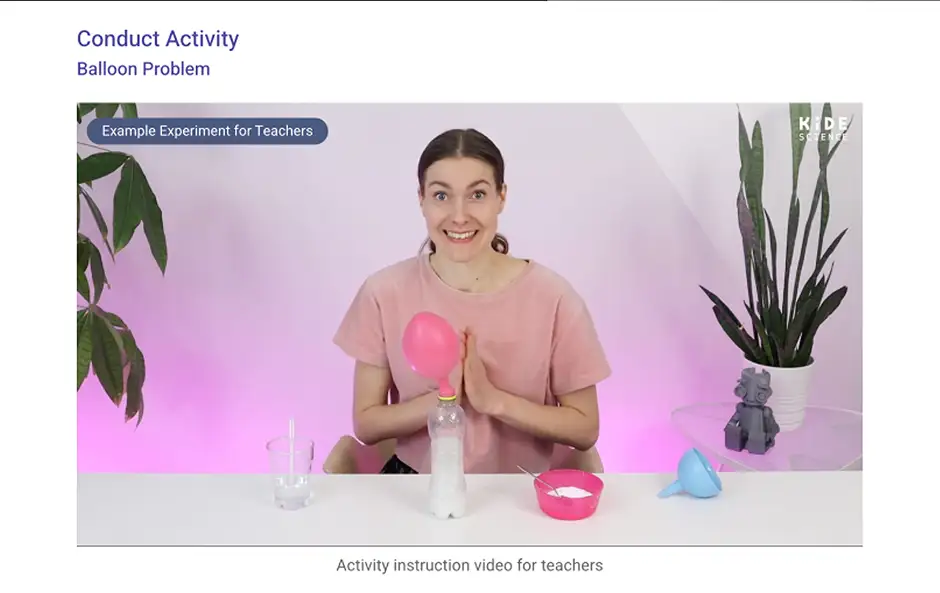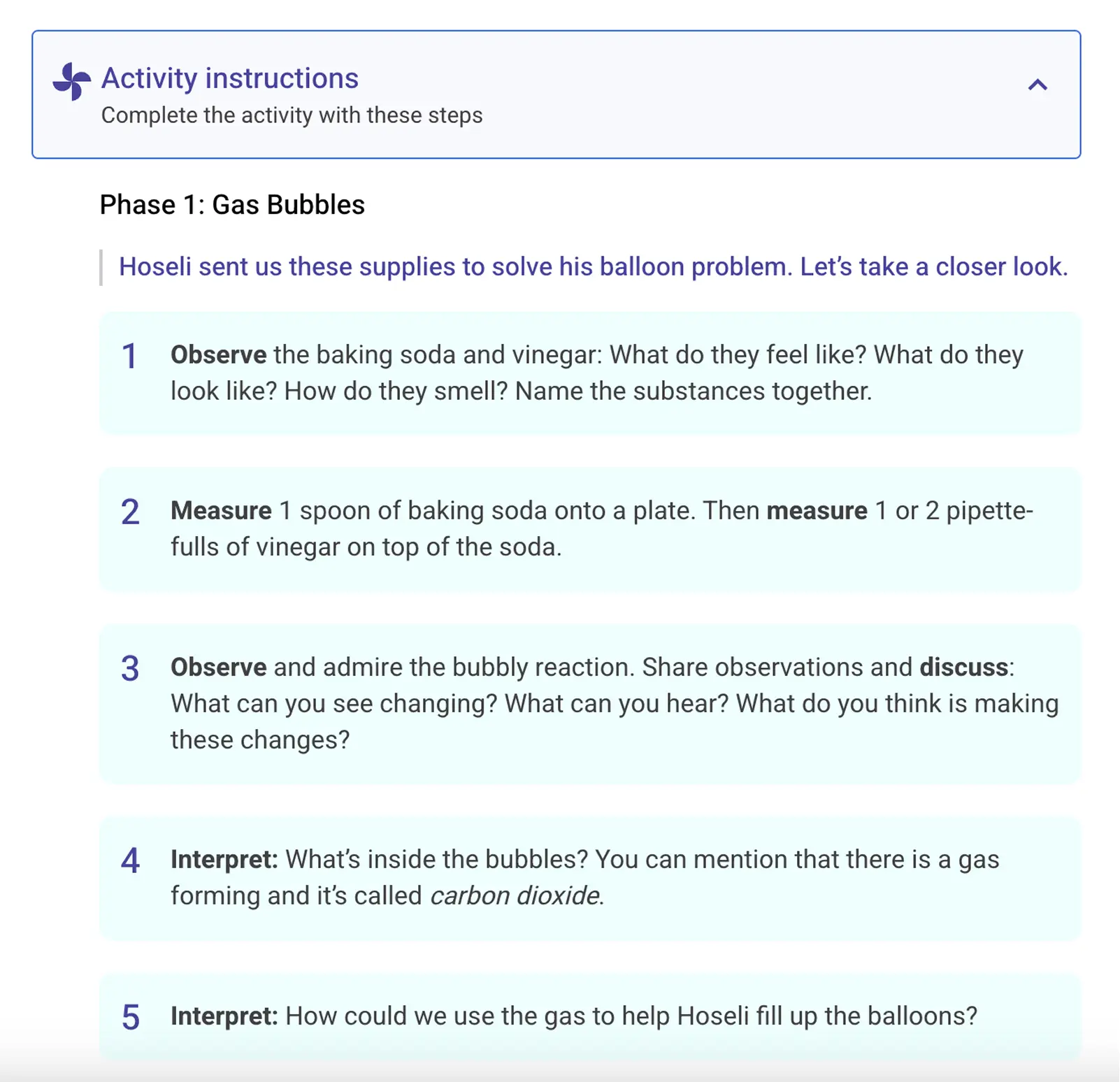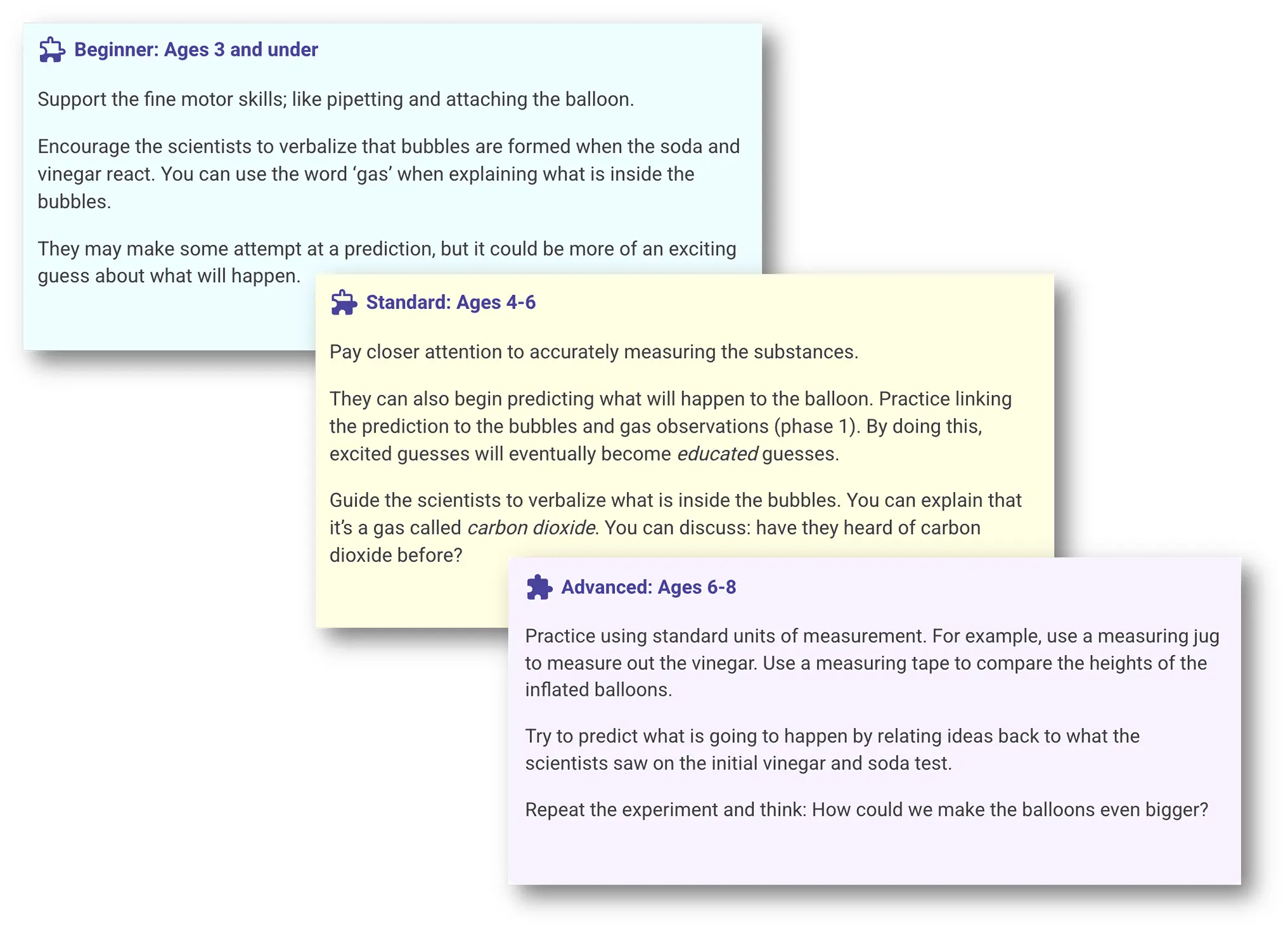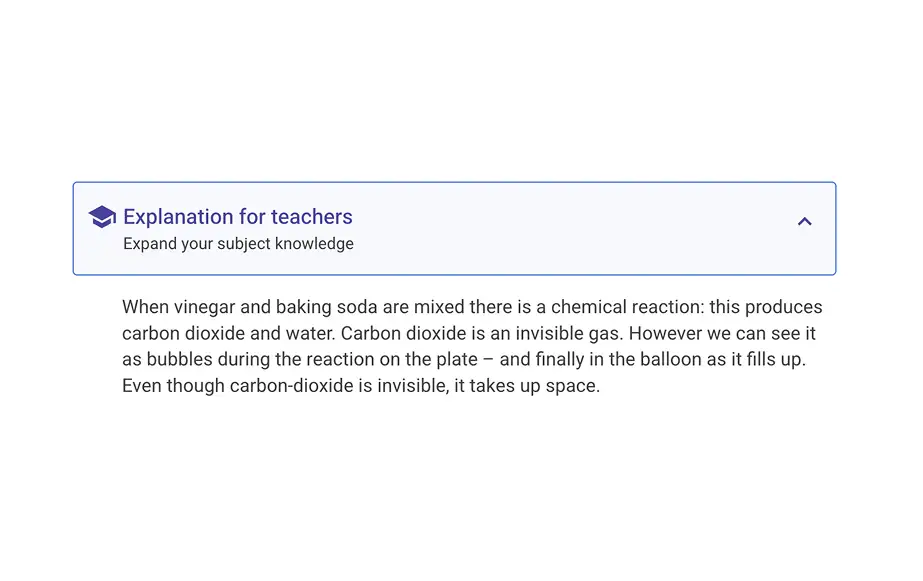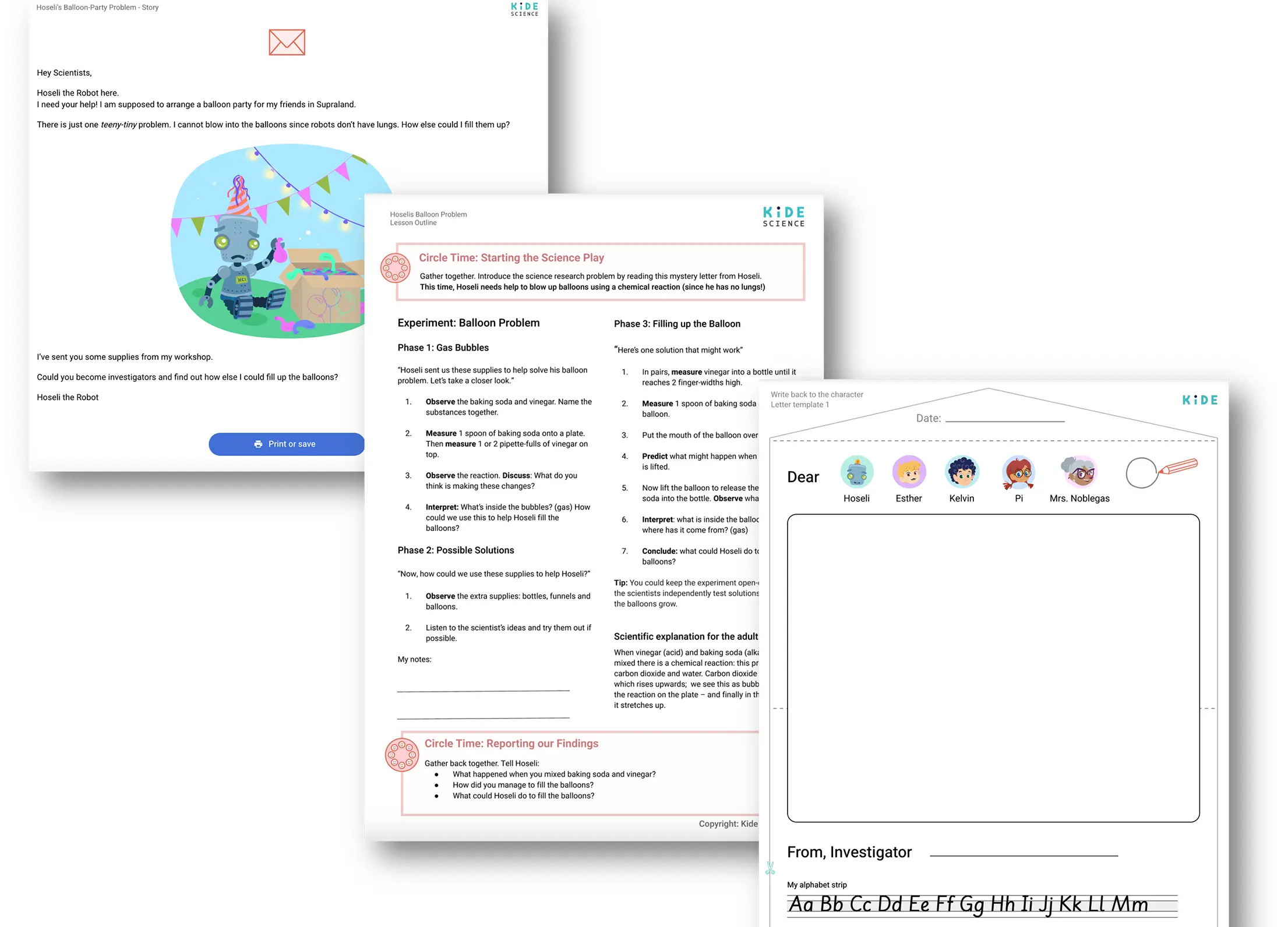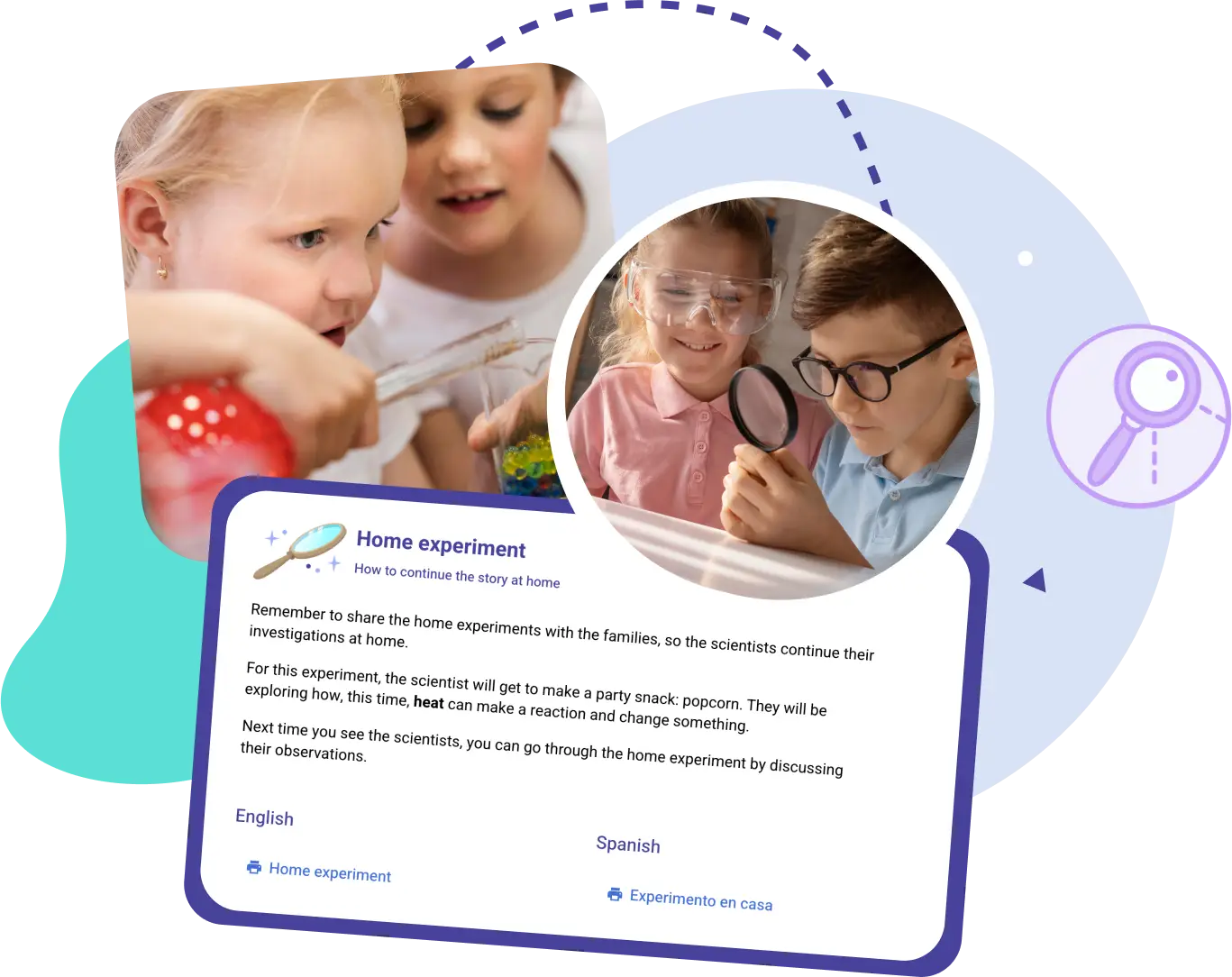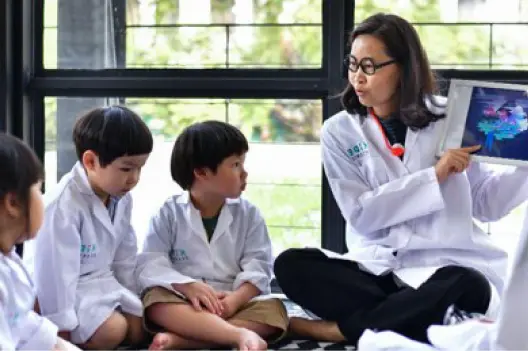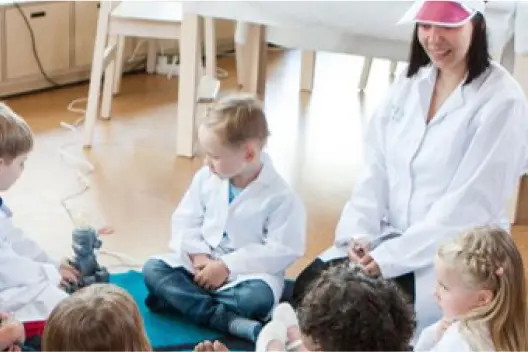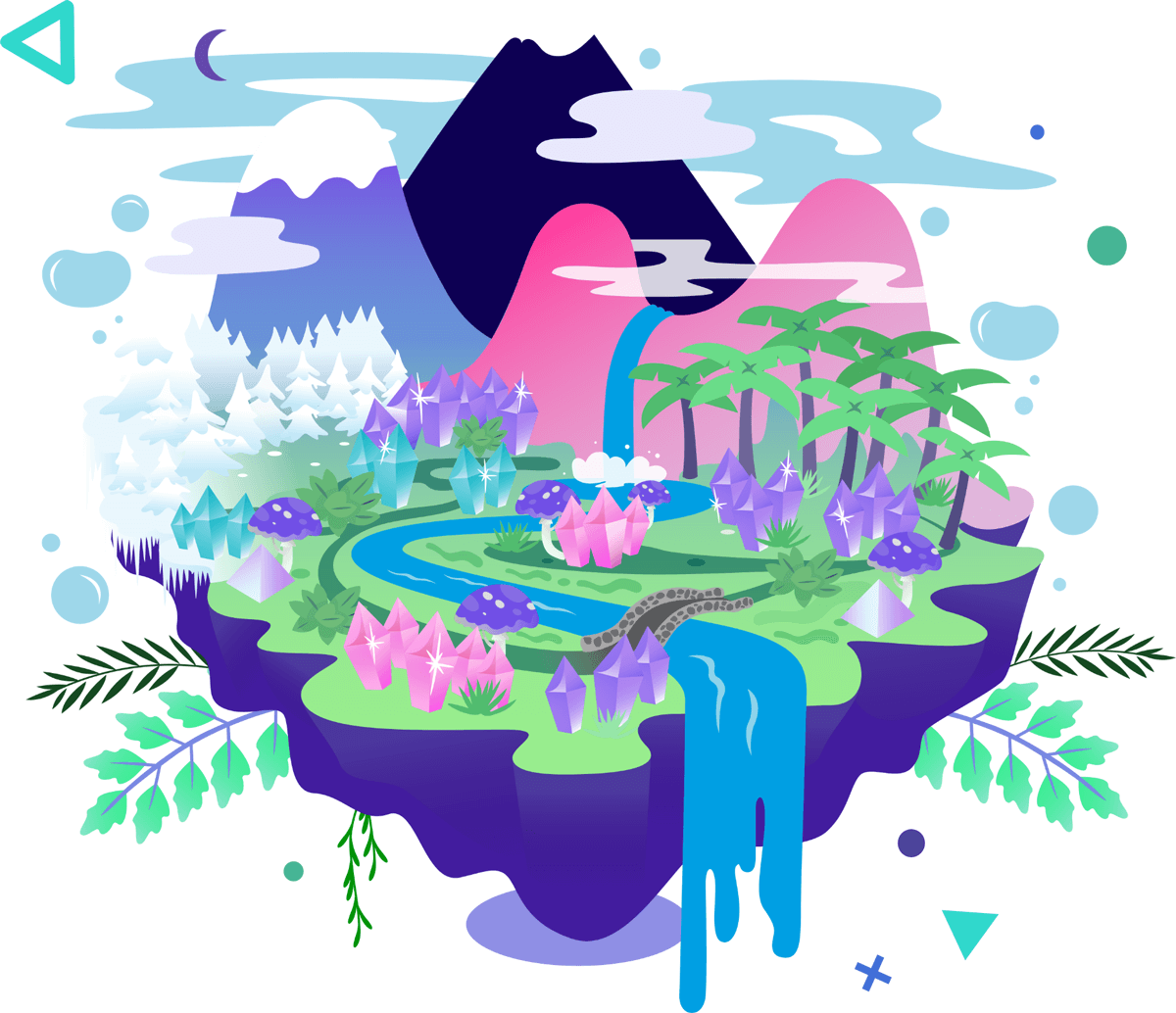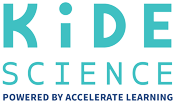Dive into a Kide
Science Lesson
Inspire young learners, from preschool to grade 2, with Kide Science! A hands-on, heads-on, hearts-on approach makes play-based STEAM education engaging through storytelling, play, and experimentation.
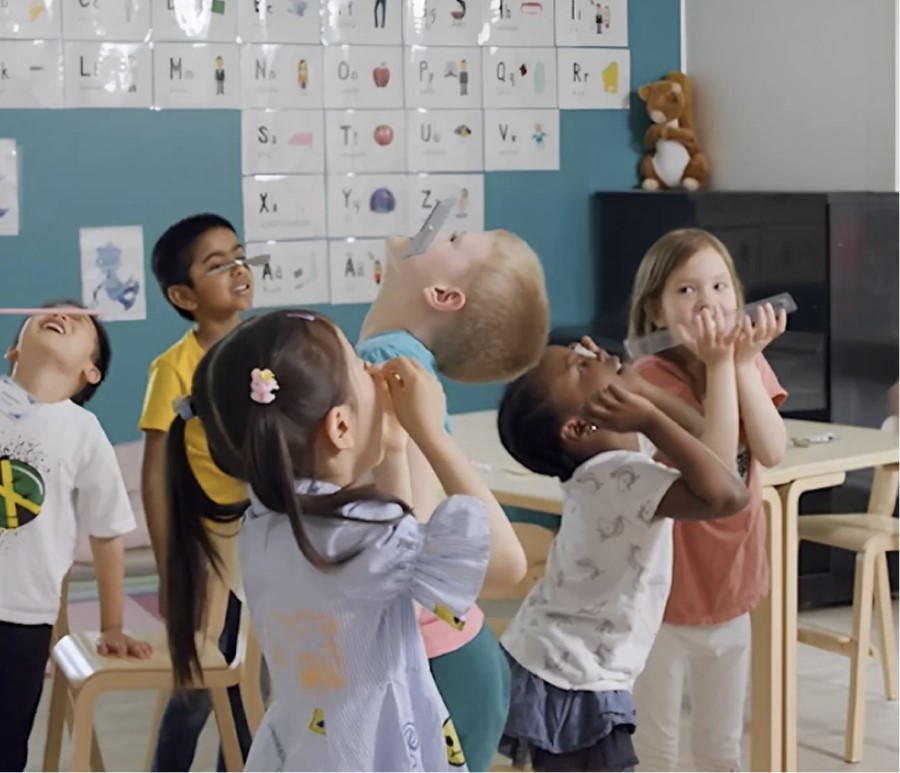
Our 3-Part Playful
Inquiry Approach
What does playful inquiry look like in Kide?
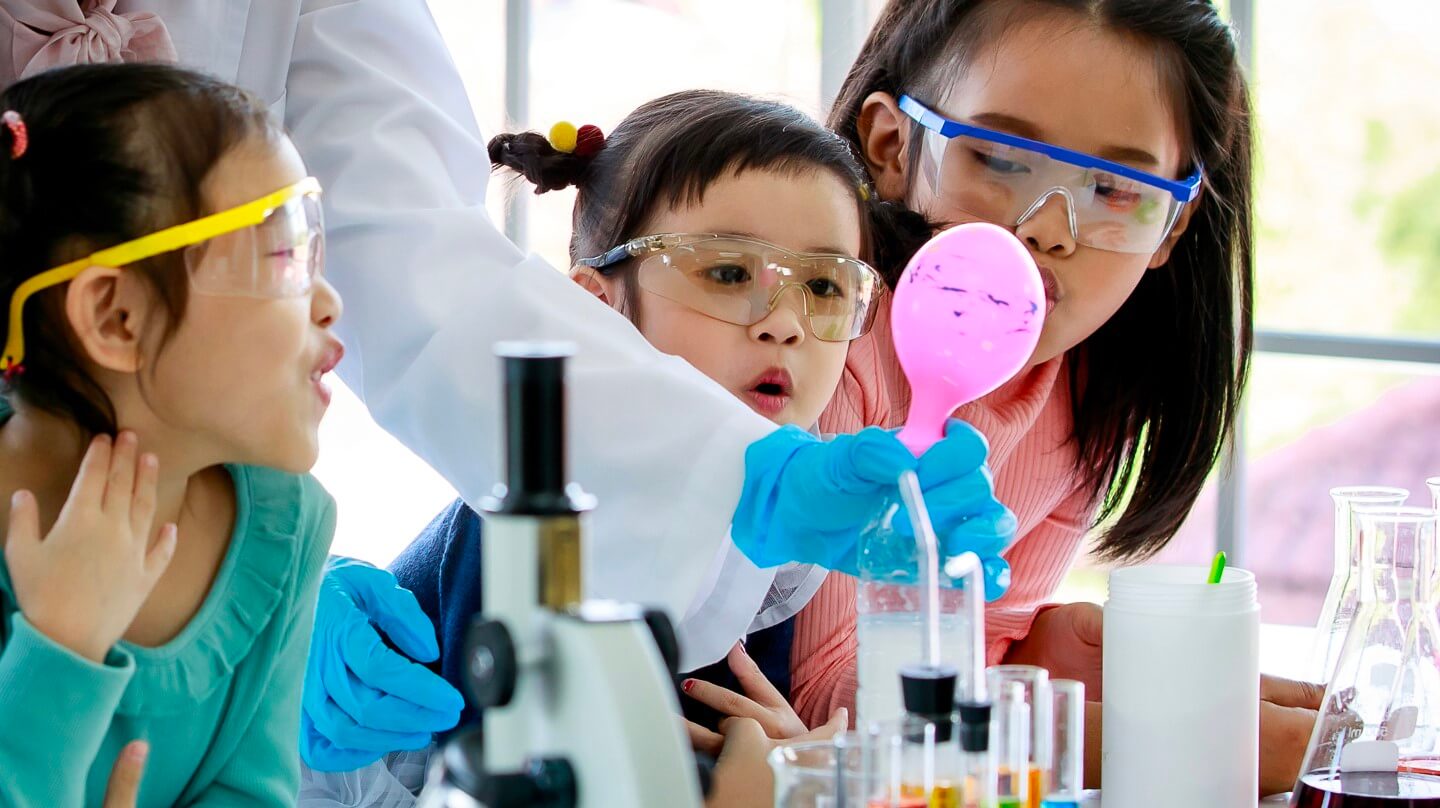
Playful Inquiry in Practice. Let’s jump into impaginary play!
Dive into each component below
- Jump into imaginary play
- Hook students with a letter from a story character
- Develop inquiry skills through experimentation
- Collaborate to solve open-ended problems
- Share your findings and celebrate learning together
- Jump into imaginary play
- Hook students with a letter from a story character
- Develop inquiry skills through experimentation
- Collaborate to solve open-ended problems
- Share your findings and celebrate learning together
Hook Students with a Letter from a Story Character
Each lesson begins with story-based STEAM learning, sparked by a playful letter from the magical world of Supraland. A character faces a tricky problem, sparking curiosity and engaging your students as they step in to help solve it.
Develop Inquiry Skills through Experimentation
Using inquiry-based learning tools and hands-on science lessons, students explore and solve open-ended problems together.
Collaborate to Solve Open-ended Problems
Inspire creativity as students collaborate to solve the story problem. Teacher tips and extended learning opportunities keep experiments open-ended and the play going beyond the lesson.
Share Your Findings and Celebrate Learning Together
Wrap up the lesson by coming together to share your solutions with the story character. This final step reinforces early communication skills and celebrates students’ learning and problem-solving achievements.
This collaborative sharing reinforces communication skills and fosters a love of learning in preschool and kindergarten STEAM classrooms.
Teacher Supports and Professional Learning
Each lesson comes packed with STEAM teaching resources and teacher training for STEAM facilitation—from demo videos to printable guides.
Parent Involvement
Every lesson includes a home science activities for kids, allowing young scientists to continue their discoveries beyond the classroom. Instructions are available in both English and Spanish, and students can share their observations in the next class discussion.
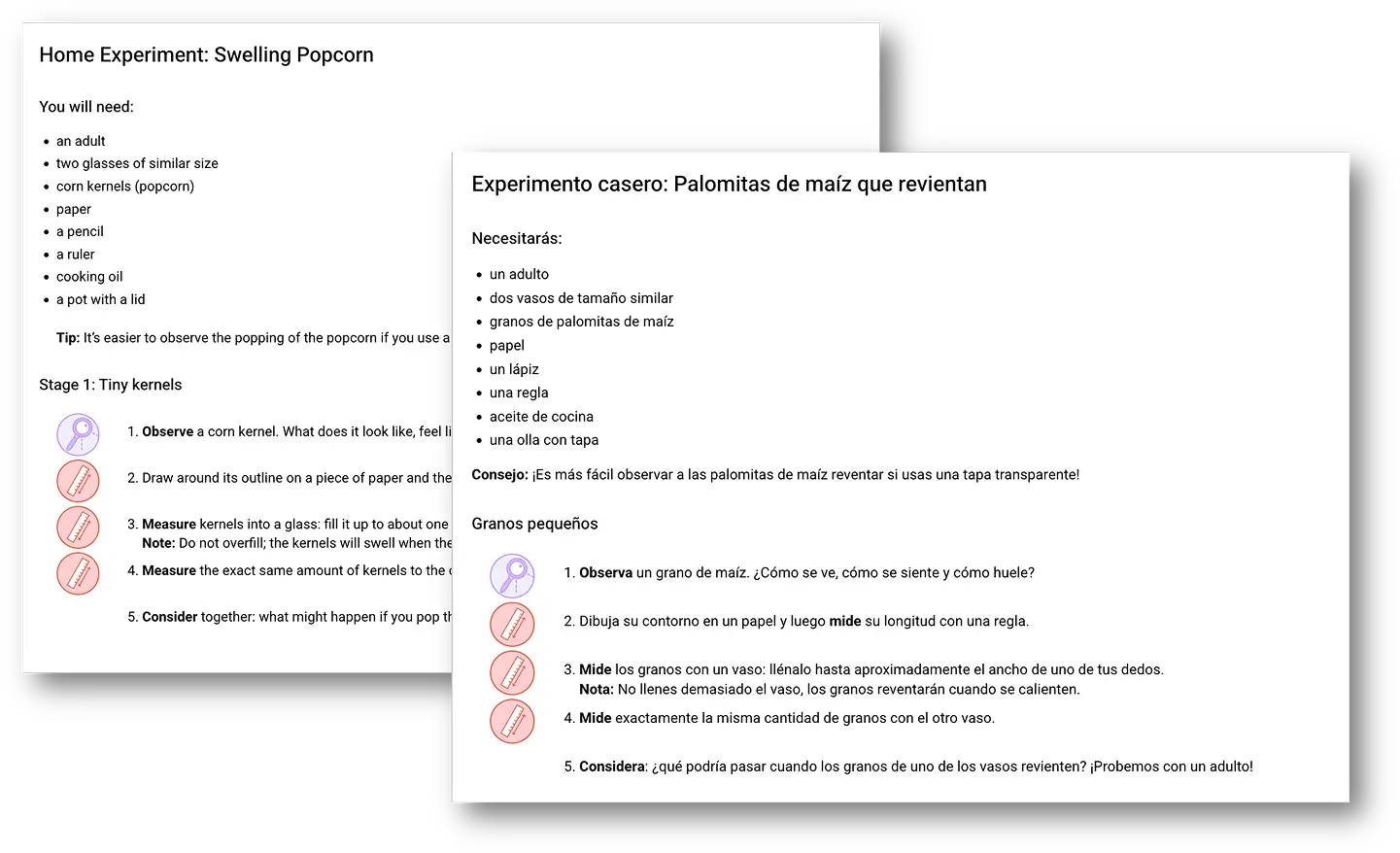
Get a Tour of Kide’s Teacher Platform
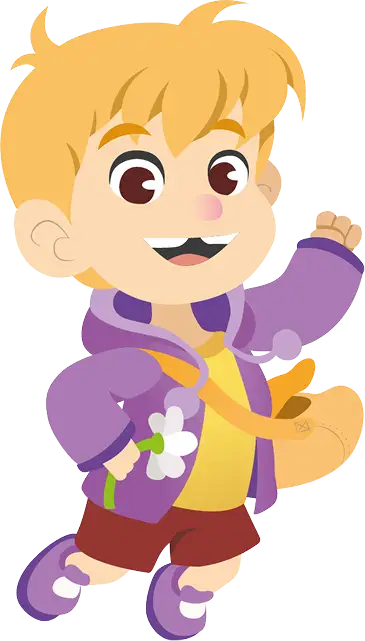
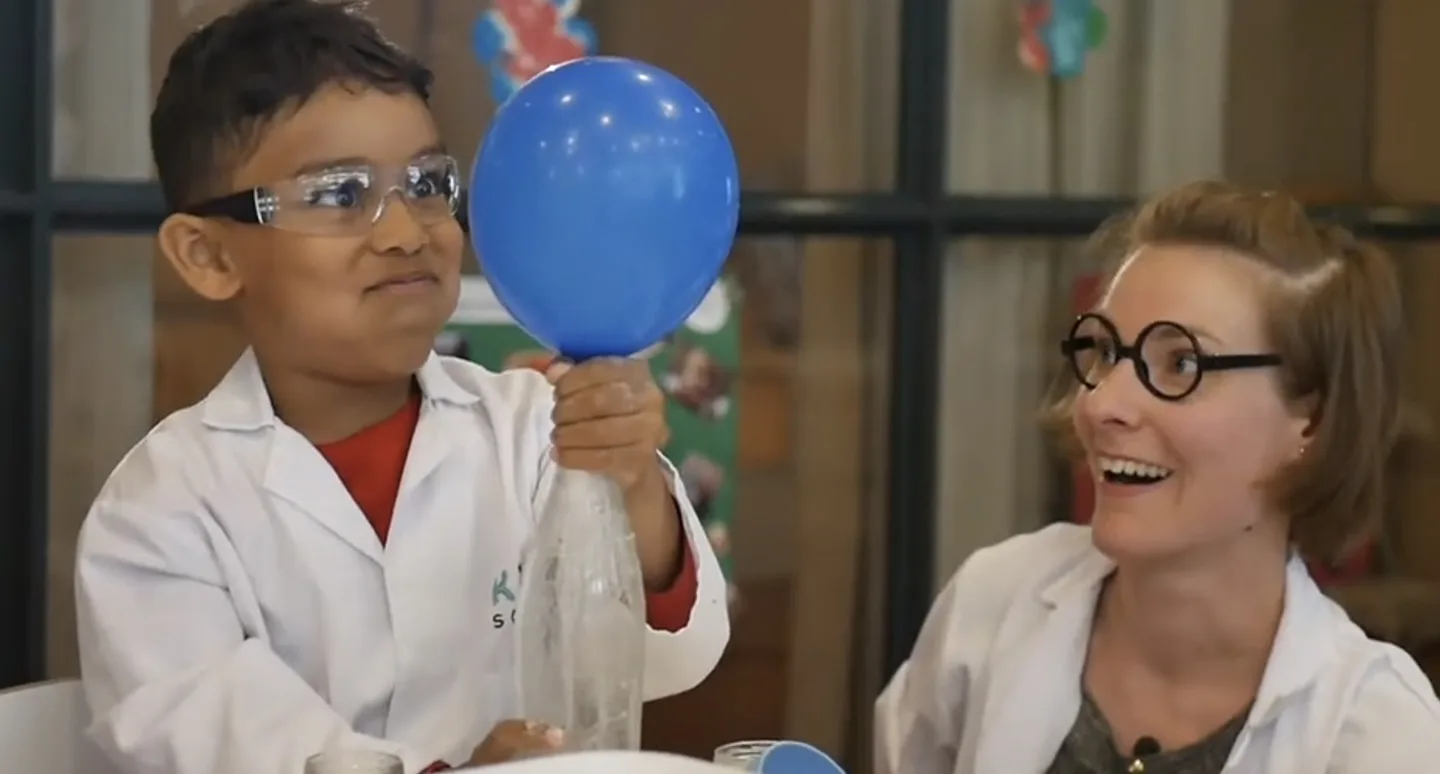
Discover Kide’s Teacher Platform
Explore more play-based STEAM education strategies and story-based STEAM learning resources to inspire your teaching.
Jump Into a Lesson Today — No Cost, Just Fun!
Related Resources
If you’re interested in learning more about play-based learning, check out these additional resources.
Frequently Asked Questions
- How can a lesson be appropriate for Preschool to Grade 2 (ages 3-8)? That’s a really big age gap.
You’re right! We don’t expect you to teach the exact same lesson to every age group. Each experiment comes with adaptation tips to tailor the lesson to the age and skill levels of your group.
These tips include ways to ease the task for the youngest scientists (beginner level) or provide a challenge for the more experienced ones (advanced level). Some learners could, for example, begin to measure the length of flowers using their fingers, whereas the more experienced ones could use a ruler for the same task and mark down results.
- How do you assess with Kide?
Kide is created with early years children in mind – and that goes for assessment too.
Especially at this young age, the most appropriate way to assess is by documenting and celebrating the learning process together. We provide teachers with practical and child-friendly ways to do this: we don’t have tests or online reporting systems, but we do have toolkits and writing templates to help gather and visualize children’s ideas and successes. This formative style best supports young children’s learning.
- What topics do you cover?
We truly are cross-curricular. Our main topics are Science, Technology, Engineering, Art, and Math (AKA… STEAM!), and we often thread all of these into the same lesson.
Kide also provides the perfect context for developing ELA skills. Our fictional, playful lessons encourage skills such as listening comprehension and print concepts. And children are supported to communicate their ideas in a variety of exciting ways: Kide learning is multimodal literacy at it’s finest!
And if you’re still wanting more, our lessons also provide an opportunity to practice many other areas of learning, such as geography, health, and physical skills.
Ultimately, our goal is to give children the social-emotional, critical thinking and problem-solving skills needed to navigate the world as they grow.
Your Complete STEM Solution Starts Here
Hands-on science, real-world math, and critical thinking—each program stands strong alone and even stronger together. Build a classroom where curiosity leads and every learner thrives.
